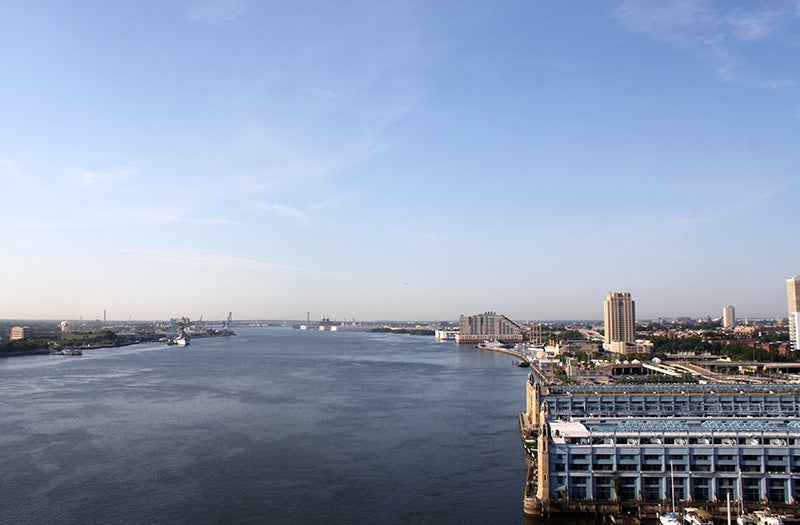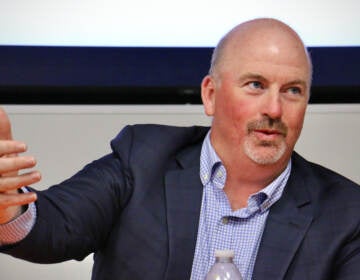Waterfront corporation goes ‘mayor-proof’, adds advocacy group to board

When the Delaware River Waterfront Corporation was formed in 2009, a year after Mayor Michael Nutter took office, the mission of the new agency was to help create and guide a master plan for the development of the Central Delaware and to secure financing for public amenities like the Race Street Pier and the evolving Delaware River Trail.
Even more importantly, DRWC was instructed to conduct its business openly and professionally, in a break with tradition from its predecessor, the Penn’s Landing Corporation. Nutter himself appointed the first board, made up of 15 members, and directed the agency to comply with the Sunshine Act, which requires public agencies to hold their meetings publicly.
Last month, DRWC took steps to ensure that the board stays transparent and professional in perpetuity.
At its October meeting, the board voted to change its own bylaws so that ten of its members would be selected by the board itself, leaving the mayor with a total of three discretionary appointees. The change also dedicates a new seat, for the first time, to the Central Delaware Advocacy Group, a coalition of civic associations whose boundaries include waterfront areas stretching from Pennsport to Port Richmond.
“Up until the change in our bylaws, all the appointments were made by the mayor,” said Tom Corcoran, president of DRWC. “And it’s very unusual to have a nonprofit where all the board is appointed by the mayor or any political entity.”
Corcoran said that Nutter was informed of the change in bylaws, but that the move is simply part of the natural maturation of the agency.
“This is from my point of view sort of a matter-of-fact exercise …” he said. “It was time to do it and it just made sense.”
The change splits the board into two classes of directors.
Six Class A directors will be appointed by the Mayor, the Philadelphia Industrial Development Corporation, the Chamber of Commerce, and CDAG.
Ten Class B directors, to be chosen by the board, must have expertise in one of a number of fields, including planning, design, development, landscape architecture, community relations, and fundraising, among others.
It may be a matter-of-fact exercise, but from advocates’ point of view, Corcoran is underselling the move somewhat. In the relatively dramaless world of quasi-public agencies, authorities, boards and commissions, the change counts as something of a coup. Like the addition of the Office of Sustainability to the city charter, the formalization of DRWC’s board structure will preserve a portion of Nutter’s legacy beyond the end of his term next year.
“Our biggest concern moving forward was, ‘How do we ensure continuity at the DRWC when a new mayor comes in?’” said Matt Ruben, the chair of CDAG, in an email. “And our biggest advocacy point for the 2015 Mayoral election was going to be, ‘Leave the DRWC alone.’ Now DRWC has effectively made itself mayor-proof, and we can stay focused on the waterfront itself.”
At their monthly meeting last week, CDAG members said they felt vindicated in their mission by being brought into the DRWC fold, but some emphasized the need to maintain their independence.
“It will be on us to truly be and to remain an independent advocate for everything CDAG holds dear,” said Andrew Goodman, the director of community engagement for the New Kensington Community Development Corporation.
“It can be tough to be inside and outside of the tent,” he added.
Matt Ruben acknowledged that collegiality on a board of directors can make it tough for individual board members to take dissenting views. But he said DRWC has shown itself to share CDAG’s vision for the waterfront over the years, and at any rate CDAG will be free to take any position it wants on matters before the board.
“DRWC’s addition of a board seat for CDAG is an unexpected and welcome development,” Ruben later wrote in an email. “It gives the public a direct voice in key decision-making on waterfront planning and redevelopment. Direct public involvement drove the Civic Vision for the Central Delaware, and created the political will to have a waterfront planning process in the first place. In a very real sense, DRWC exists at all because people on the waterfront advocated for its creation. So even though there’s a lot more work to do, this feels like a kind of culmination of our efforts.”
A spokesman for Mayor Nutter did not immediately respond to a request for comment on Monday.
WHYY is your source for fact-based, in-depth journalism and information. As a nonprofit organization, we rely on financial support from readers like you. Please give today.






